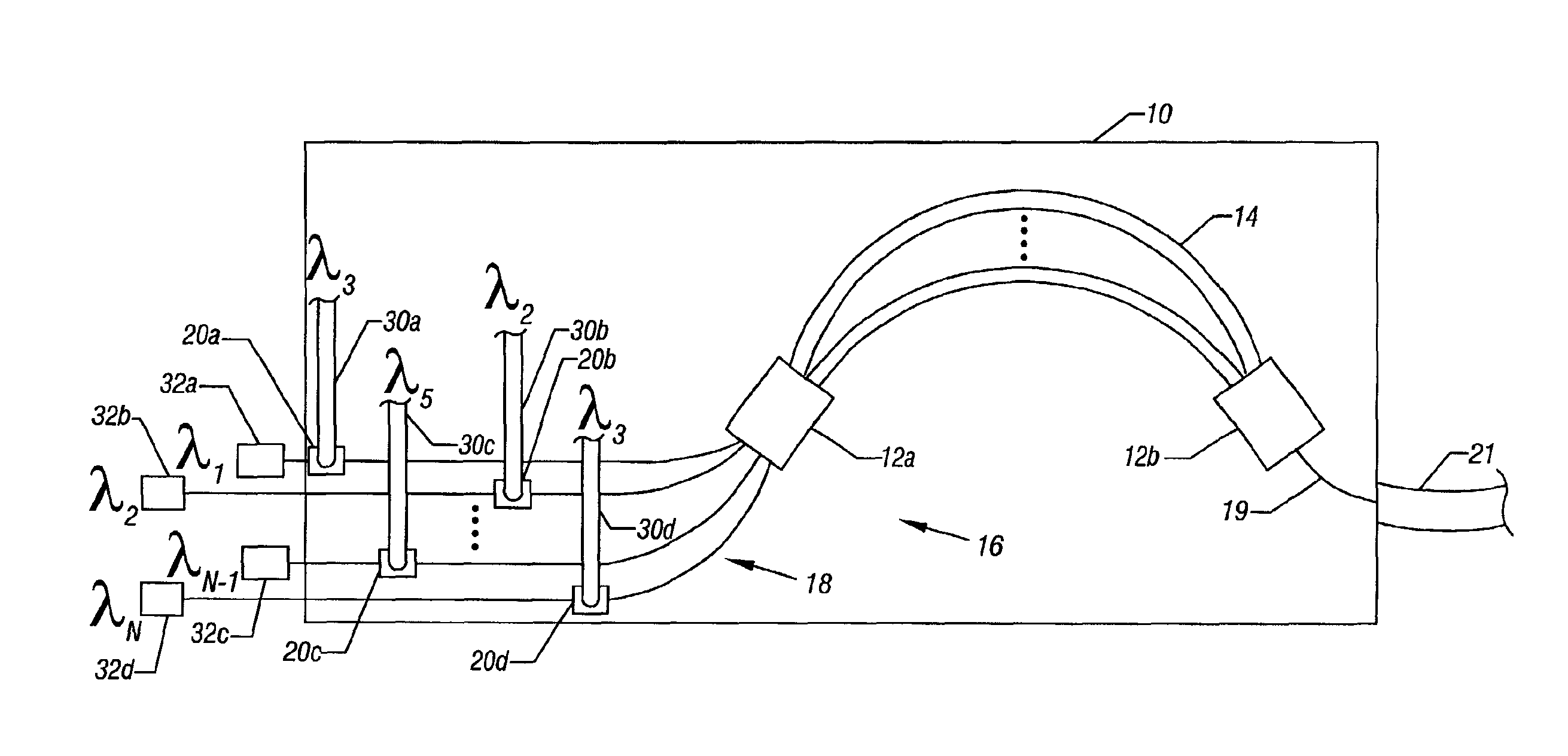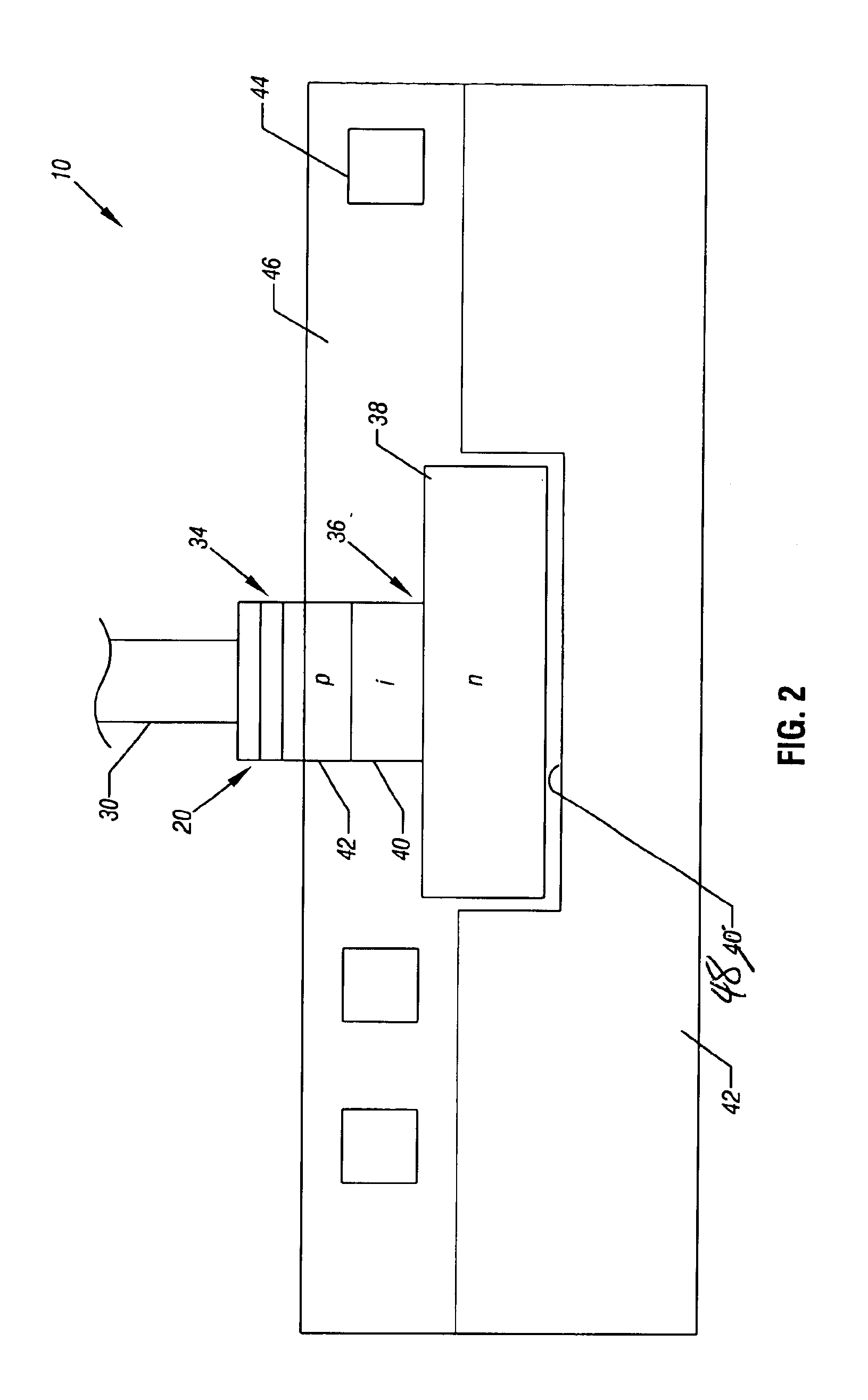Managing channels with different wavelengths in optical networks
a technology of optical networks and channels, applied in the field of optical networks, can solve problems such as confli
- Summary
- Abstract
- Description
- Claims
- Application Information
AI Technical Summary
Problems solved by technology
Method used
Image
Examples
Embodiment Construction
An arrayed waveguide grating (AWG) 10, sometimes also called a waveguide grating router (WGR) or a phasar, may be formed as an integrated optical circuit. The AWG 10 may include a plurality of input waveguides 18 that leads to a star coupler 12a, an array of waveguides 14 between the star coupler 12a and the star coupler 12b, and an output waveguide 19 coupled to the coupler 12b. The length of each arrayed waveguide 14 in the array of waveguides 14 may be distinguished from its adjacent waveguide by a length difference (ΔL).
A channel of certain wavelength enters the AWG in one of the input waveguides 18. The input coupler 12a splits the light in the channel among the arrayed waveguides 14. Each portion of the input light traveling through an arrayed waveguide 14 includes any wavelength that has entered the AWG 10 in any of the input channels 18. Each wavelength then acquires an individual phase shift. In addition, each wavelength for each channel receives phase shifts in the input a...
PUM
 Login to View More
Login to View More Abstract
Description
Claims
Application Information
 Login to View More
Login to View More - R&D
- Intellectual Property
- Life Sciences
- Materials
- Tech Scout
- Unparalleled Data Quality
- Higher Quality Content
- 60% Fewer Hallucinations
Browse by: Latest US Patents, China's latest patents, Technical Efficacy Thesaurus, Application Domain, Technology Topic, Popular Technical Reports.
© 2025 PatSnap. All rights reserved.Legal|Privacy policy|Modern Slavery Act Transparency Statement|Sitemap|About US| Contact US: help@patsnap.com



